Cosplay is a vibrant global phenomenon combining costumes, props, and acting to embody fictional characters. It celebrates creativity, self-expression, and community, bringing fans together worldwide to share their passion for pop culture.
1.1 What is Cosplay?
Cosplay is a creative art form where individuals embody fictional characters from pop culture, such as anime, comics, movies, or video games. It combines costumes, props, and acting to bring characters to life. Cosplayers express their passion for storytelling and self-expression through meticulous attention to detail, crafting outfits, and performing as their chosen characters. This global phenomenon fosters community, creativity, and connection among fans. Whether for personal enjoyment or public events, cosplay celebrates the joy of transformation and the love for shared cultural experiences.
1.2 The Importance of Costumes and Props in Cosplay
Costumes and props are essential elements in cosplay, as they transform a cosplayer into their chosen character. They ensure accuracy and authenticity, capturing the character’s essence through meticulous details. Props, such as weapons or accessories, add depth and realism, while costumes reflect the character’s style and personality. These elements not only enhance the visual impact but also help in storytelling, making the character recognizable and relatable. High-quality costumes and props elevate the cosplayer’s portrayal, allowing them to fully embody their character and connect with fans. They are vital for creating a believable and immersive experience, making them central to the art of cosplay.
1.3 A Brief History of Cosplay
Cosplay, short for “costume play,” has its roots in early 20th-century theater and masquerade balls. It gained popularity in Japan in the 1980s, influenced by anime, manga, and video games. The term “cosplay” was coined in 1984 by Nov Takahashi, combining “costume” and “play.” Initially, it was a niche hobby but quickly spread globally, becoming a cultural phenomenon. The rise of the internet and social media in the 2000s fueled its growth, connecting fans worldwide. Today, cosplay is a vibrant art form, celebrated at conventions, festivals, and online communities. It has evolved into a creative outlet, allowing fans to express their love for characters and stories while fostering a sense of belonging and shared passion.
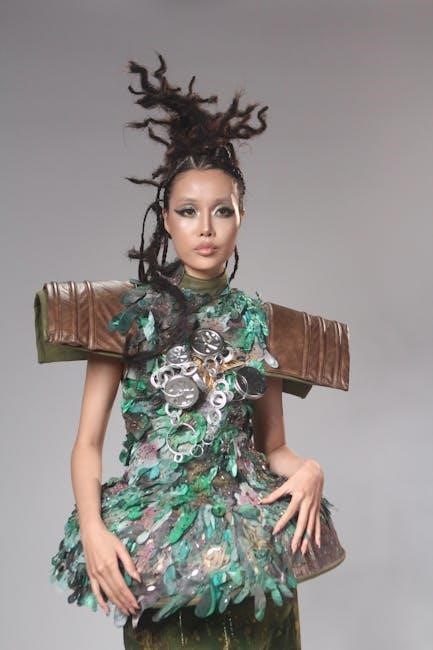
Planning and Design
Planning and design are crucial for creating authentic cosplay outfits. Start by researching your character, gathering reference images, and sketching your design. Consider time, budget, and skill level to ensure a realistic and achievable project. Break down the costume into manageable parts, list materials needed, and create a step-by-step plan. This foundation helps guide the entire creation process, ensuring accuracy and attention to detail. Proper planning also helps identify potential challenges early, allowing for adjustments and a smoother workflow.
2.1 How to Choose a Character and Reference Art
Choosing the right character and reference art is the first step in creating an authentic cosplay. Select a character you resonate with, considering your skill level, budget, and the time you can dedicate to the project. Look for high-quality reference images from official sources, such as anime, games, or movies, to ensure accuracy. Fan art and other cosplayers’ interpretations can also inspire your design. Create a mood board or Pinterest folder to organize your ideas and visualize the final look. Pay attention to details like colors, textures, and accessories to capture the character’s essence. If the character has multiple versions, decide which one you want to portray. Gathering clear and detailed references will guide your costume and prop-making process, helping you stay true to the character’s design.
2.2 Designing Your Costume and Props
Designing your costume and props requires careful planning to ensure accuracy and creativity. Start by sketching your design, considering the character’s style, colors, and details. Break down complex elements into manageable parts, such as separating armor pieces or accessories. Choose materials that match the character’s aesthetic while ensuring comfort and durability. For props, consider lightweight options like EVA foam or 3D printing for intricate designs. Test techniques on scrap materials before working on the final pieces. Reference high-quality images to capture small details, and plan for assembly and finishing touches. Organize your design into a checklist to track progress and stay focused. This step ensures your cosplay vision comes to life accurately and efficiently.
2.3 Creating a Detailed Plan and Checklist
A detailed plan and checklist are essential for successful cosplay projects. Start by breaking down your costume and props into smaller, manageable parts. Set realistic deadlines for each component, ensuring enough time for crafting, adjustments, and assembly. List all required materials and tools, cross-referencing with your design sketches. Track your progress with a checklist, marking off completed tasks to stay organized. Include notes on techniques, safety precautions, and reference images for accuracy. Regularly review and adjust your plan to accommodate changes or challenges. This structured approach helps reduce stress, ensures no details are overlooked, and keeps your project on track. A well-planned checklist is your roadmap to achieving a polished, professional-looking cosplay.
Materials and Tools
Essential materials include EVA foam, fabric, thermoplastic, and faux leather, while tools like craft knives, rotary tools, and respirators are vital for safe, precise prop-making and costume crafting.
3.1 Essential Materials for Beginners
For beginners, essential materials include EVA foam, fabric (cotton, polyester, or spandex), thermoplastic, and faux leather. EVA foam is lightweight and ideal for props and armor, while fabric is crucial for sewing costumes. Thermoplastic adds rigidity and detail, and faux leather offers a realistic look for accessories. Scrap materials like foam offcuts are great for practice. Adhesives like contact glue and hot glue are indispensable for bonding pieces. Paint and sealants are used for finishing touches. Comfortable fabrics ensure wearability, while durable materials like Worbla enhance longevity. These materials are affordable and easy to work with, making them perfect for new cosplayers to experiment and create their first projects.
3.2 Tools You’ll Need for Cosplay Prop-Making
Essential tools for cosplay prop-making include a Dremel or rotary tool for carving and sanding, a sharp craft knife for cutting materials, and a heat gun for shaping thermoplastic. Sandpaper in various grits is crucial for smoothing edges and surfaces. A hot glue gun is perfect for bonding materials like foam and fabric. Measuring tools, such as rulers and calipers, ensure accuracy. Cutting mats and clamps help protect work surfaces and hold pieces in place. Safety gear like respirators and gloves are vital when working with chemicals or power tools. These tools are fundamental for creating detailed and durable props, whether you’re a beginner or an experienced cosplayer.
3.3 Safety Tips When Working with Materials
Safety is paramount when working with materials for cosplay prop-making. Always wear protective gear, such as gloves, goggles, and a respirator, especially when sanding or using chemicals. Ensure good ventilation to avoid inhaling fumes from adhesives or paints. Keep a fire extinguisher nearby when working with heat tools like heat guns or soldering irons. Test new tools on scrap materials first to understand their behavior. Avoid wearing loose clothing that could get caught in power tools. Store sharp objects and chemicals out of reach of children and pets. Regularly clean your workspace to prevent accidents. By following these safety tips, you can create props confidently while protecting yourself and your environment.
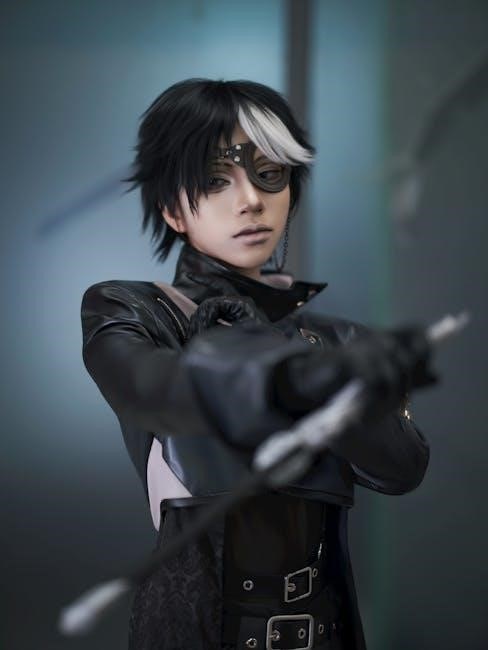
Costume Making
Cosplay costumes require careful material selection, precise sewing, and attention to detail. Choose fabrics that match your character’s style, ensuring comfort and durability. Add embellishments for authenticity and a polished finish.
4.1 Choosing the Right Fabric and Materials
Selecting the right fabric and materials is crucial for creating an authentic and comfortable cosplay costume. Consider the character’s style, durability, and comfort. Common fabrics include cotton, polyester, and spandex for flexibility. For armor or accessories, EVA foam, Worbla, and thermoplastics are ideal. Always pre-wash fabrics to avoid shrinkage and ensure color consistency. Choose materials that match the character’s aesthetic, whether it’s smooth, textured, or metallic. Budget and skill level also play a role; start with affordable, easy-to-work-with materials like fleece or foam. Proper material selection enhances both the appearance and wearability of your cosplay, making it stand out while ensuring all-day comfort.

4.2 Step-by-Step Guide to Sewing Your Costume
Start by cutting fabric according to your pattern or design, ensuring accurate measurements. Use a sewing machine for straight seams and hand-stitch for intricate details. Begin with the main garment pieces, sewing them together while leaving room for zippers or closures. After sewing, try on the costume to check the fit and make necessary adjustments. Pay attention to seam finishes to prevent fraying. For complex designs, break the project into smaller parts, such as sleeves or collars, and assemble them step-by-step. Use interfacing or stabilizers for structural integrity. Finally, add embellishments like embroidery, appliques, or fabric paint to enhance the design. Proper sewing techniques ensure a professional finish and a comfortable, durable costume.
4.3 Adding Details and Embellishments
Adding details and embellishments brings your cosplay costume to life, enhancing its authenticity and visual appeal. Start by studying reference images to identify key design elements. Use fabric paint, markers, or appliques to add patterns, logos, or textures. Embellishments like beads, sequins, or metallic trim can highlight intricate designs. For weathered effects, apply distressing techniques such as sanding, ripping, or using fabric dyes. Consider adding layers like lace, ribbons, or faux fur for depth. Properly secure all details to ensure durability, especially if the costume will be worn frequently. Finally, finish seams and edges to prevent fraying, ensuring a polished look. These touches transform a basic costume into a stunning, character-accurate piece.
Prop Making

Prop making is a cornerstone of cosplay, transforming concepts into tangible, detailed accessories. Common materials include EVA foam, thermoplastic, and faux leather, shaped using tools like Dremel and sanders. Techniques involve cutting, carving, and assembling pieces, often with contact glue or epoxy. Safety is crucial, requiring respirators and proper ventilation. Weathering effects, like distressing or painting, add realism. Testing on scrap materials ensures mastery before final creation. Props must be durable yet lightweight for comfort during wear. Advanced methods include 3D printing and molding for intricate designs. Each step demands precision and creativity to bring characters to life authentically.
EVA foam is a versatile and lightweight material widely used in cosplay prop making. It’s ideal for creating intricate designs, armor, and weapons due to its flexibility and ease of shaping. Available in various thicknesses, EVA foam can be cut with sharp craft knives or rotary tools and sanded for smooth edges. To bond pieces, contact glue is commonly used, ensuring durability. Safety is key; wear a respirator when sanding or using adhesives. Scrap foam pieces are perfect for testing techniques. EVA foam’s affordability and accessibility make it a favorite for both beginners and experienced cosplayers. With proper tools and techniques, it can be transformed into realistic and detailed props, bringing characters to life authentically.

5.2 Step-by-Step Guide to Creating Props
Creating cosplay props involves careful planning and execution. Start by gathering reference images to ensure accuracy. Cut out the base shape from materials like EVA foam or Worbla using sharp tools. Sand edges for smoothness and assemble pieces with contact glue or hot glue. For details, use paint, markers, or small craft items. Add weathering effects with distressing techniques or washes. Test props for durability and safety, ensuring they are lightweight and secure. Practice on scrap material first to refine skills. Finally, seal with a protective finish to enhance appearance and longevity. With patience and attention to detail, you can craft props that bring your character to life authentically.
5.3 Advanced Prop-Making Techniques
Advanced prop-making techniques elevate your cosplay to professional levels. Use 3D modeling software like Blender or Fusion 360 to create precise digital models, ensuring accuracy and complexity; Cast intricate details with resin or silicone molds for realistic textures. Incorporate LED lighting or electronics for dynamic effects. For durability, layer materials like carbon fiber or fiberglass. Achieve metallic finishes with metal leafing or chrome paint. Add weathering effects using patina solutions or enamel paints. Experiment with vacuum forming for smooth, curved surfaces. For a professional touch, apply clear coats and sealants. Study tutorials from expert prop-makers like Kamui or Volpin for inspiration. Always test new techniques on scrap materials first to refine your skills. With practice, you can create stunning, high-quality props that stand out in any cosplay setting.
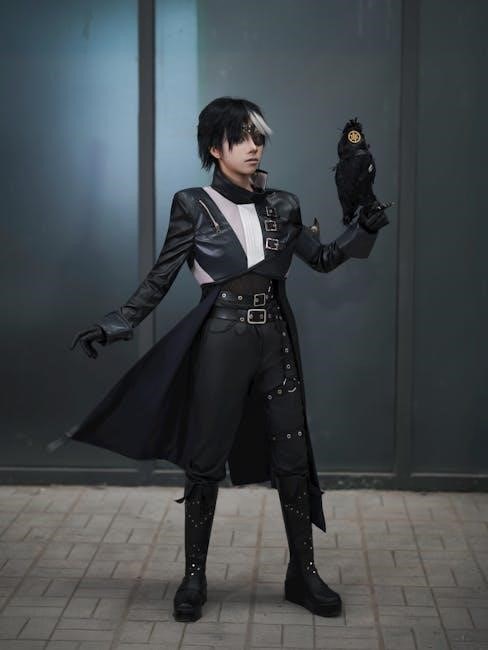
Accessories and Makeup
Accessories and makeup are crucial for completing your cosplay look. Create faux fur ears, use fabric glue for details, and master makeup techniques to enhance character accuracy and expression.
6.1 How to Make Cosplay Accessories
Cosplay accessories can elevate your character’s authenticity. Start by gathering materials like fabric, foam, or thermoplastic. For faux fur ears, cut out ear shapes, glue them to a headband, and add details with paint or markers. Use fabric glue to attach embellishments like gems or patches. For props, EVA foam is ideal—cut, sand, and paint it to match your character’s gear. Test techniques on scrap material first to ensure accuracy. Wrap handles in fabric or leather for a realistic touch. Duct tape can add a weathered effect. Consider 3D printing for intricate designs or use plastic bottles for lightweight props. Always prioritize safety and comfort, ensuring accessories are secure and durable for wear. With creativity and practice, you can craft accessories that bring your character to life.
6.2 Makeup Tips for Your Cosplay Character
Makeup is a crucial element in bringing your cosplay character to life. Start by studying reference images to capture their expression and color palette. Use contouring to define facial features and blend colors seamlessly. For intricate designs, apply prosthetics or face paint, ensuring a smooth base with primer. Match skin tones accurately and set makeup with powder for durability. Highlight eyes with bold liners and shadows to mimic the character’s gaze. Consider wigs and contact lenses for authenticity. Practice the look beforehand to perfect details. For long-lasting wear, use waterproof products and setting sprays. Attention to small details, like scars or tattoos, can enhance realism. With patience and the right tools, your makeup will transform you into your character, completing the cosplay experience.
6.3 Hairstyling for Cosplay
Hairstyling is a key aspect of cosplay, helping to complete your character’s look. Start by selecting the right wig or styling your natural hair to match the character’s style. Use high-quality wigs in the correct color and length, and style them with heat tools or hairspray for a polished finish. For intricate designs, consider braiding, dyeing, or adding extensions. Secure wigs with pins or adhesive tape for a comfortable, long-lasting fit. Add accessories like headbands, clips, or hats to enhance authenticity. Practice styling beforehand to ensure the look holds. For characters with unique hairstyles, use styling products or prosthetics to achieve the desired shape. Attention to detail in hairstyling elevates your cosplay, making it more recognizable and impressive. With the right tools and techniques, you can master any character’s hairstyle.
Photography and Posing
Photography and posing are essential for capturing your cosplay character’s essence. Use natural lighting, experiment with angles, and practice poses to embody your character’s personality and mannerisms. Edit photos to enhance details while maintaining authenticity for a professional finish.
7.1 Tips for Taking Professional Cosplay Photos
For professional cosplay photos, prioritize natural lighting and explore unique locations that match your character’s theme. Experiment with angles and composition to create dynamic shots. Use props and accessories to enhance storytelling. Consider hiring a photographer experienced in cosplay to capture high-quality images. Pay attention to posing—practice expressions and body language to embody your character. Edit photos to enhance colors and details, but avoid over-editing to maintain authenticity. Finally, review and select the best shots to showcase your cosplay masterpiece. These tips will help you create stunning, professional-looking photos that highlight your hard work and creativity.
7.2 Posing Like Your Character
Posing like your character is essential to bring their personality to life. Study reference images or videos of your character to mimic their posture, expressions, and mannerisms. Practice in front of a mirror to perfect your poses and ensure they feel natural. During photoshoots, stay in character to capture authentic emotions and attitudes. Use props strategically to enhance your poses and tell a story. Experiment with dynamic angles and poses that highlight your costume details. Remember to relax and have fun—confidence shines through in photos. By embodying your character’s essence, you’ll create memorable and impactful images that resonate with fans and showcase your dedication to cosplay.
7.3 Editing Your Cosplay Photos
Editing your cosplay photos is a crucial step to enhance their quality and bring your character to life. Start by using photo editing software like Adobe Lightroom or Photoshop to adjust brightness, contrast, and color balance. These tools help create a cohesive look that matches your character’s aesthetic. Add subtle effects like vignettes or filters to draw focus to key details. For intricate costumes, use the brush tool to enhance textures or colors without over-editing. Layers are essential for non-destructive editing, allowing you to experiment without losing the original image. Avoid over-retouching to keep the photo natural and authentic. Finally, export your images in high resolution for sharing on social media or printing. Proper editing elevates your cosplay photos, making them stand out and truly capture the essence of your character.
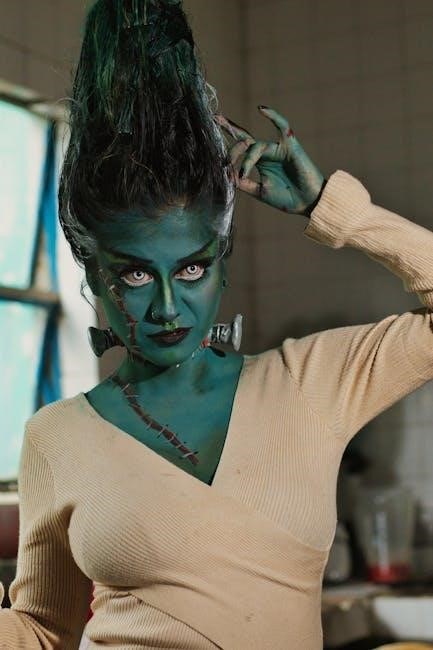
Community and Contests
Cosplay fosters a vibrant, inclusive community where enthusiasts connect, share ideas, and inspire each other. Participating in contests showcases creativity, earns recognition, and builds confidence, while networking expands opportunities for growth and collaboration.
8.1 Joining the Cosplay Community
Joining the cosplay community is a rewarding way to connect with like-minded enthusiasts, share ideas, and gain inspiration. Online platforms like Discord, Facebook groups, and Reddit offer spaces to network, learn tips, and showcase your work. Attend local conventions, meetups, and workshops to meet fellow cosplayers and participate in hands-on activities. Many communities host events, contests, and photo shoots, providing opportunities to build friendships and improve your craft. Engaging with the community fosters creativity, support, and motivation, helping you grow as a cosplayer. Whether you’re a beginner or experienced, the cosplay community is inclusive and welcoming, offering endless resources and inspiration to help you bring your characters to life.
8.2 Participating in Cosplay Contests
Participating in cosplay contests is an exciting way to showcase your skills and creativity. Research the contest rules, categories, and judging criteria to ensure your entry aligns with their requirements. Prepare a stage presence, as many contests include performances or posing. Practice your character’s mannerisms and expressions to enhance your performance. Ensure your costume and props are durable and safe for handling. Test your props beforehand to avoid malfunctions during the event. Many contests offer feedback from judges, which can help you improve. Winning contests can boost your confidence and reputation in the community. Additionally, contests are a great opportunity to network with other cosplayers and learn from their experiences. Embrace the challenge and enjoy the thrill of competing while celebrating your passion for cosplay.

8.3 Networking with Other Cosplayers
Networking with other cosplayers is a key part of growing in the hobby. Join online communities, forums, and social media groups to connect with fellow enthusiasts. Attend workshops, conventions, and meetups to meet people in person. Collaborate on projects or share tips and techniques to build relationships. Many cosplayers find inspiration and motivation through these connections. Don’t hesitate to ask for advice or feedback—experienced cosplayers often enjoy mentoring newcomers. Building a network can also open doors to new opportunities, such as group photoshoots, event invitations, or even commissions. Remember to be respectful, open-minded, and supportive when interacting with others. Networking fosters camaraderie and helps you grow both as a crafter and a performer in the cosplay community.
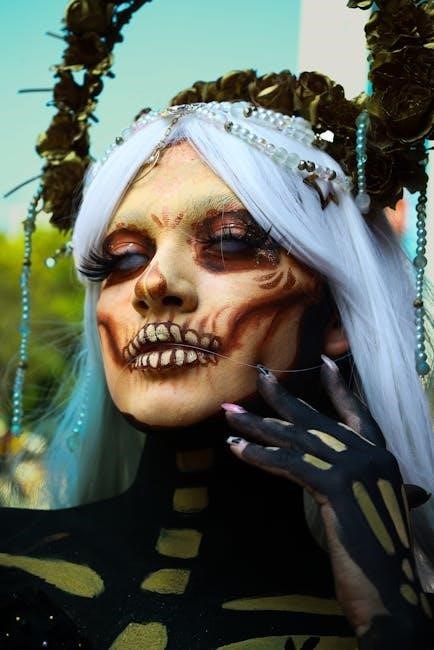
Resources and Next Steps
Explore recommended books, online tutorials, and communities for advanced techniques. Join forums and social media groups for inspiration and support. Start with EVA foam guides and prop-making tutorials to enhance your skills and connect with fellow cosplayers.
9.1 Recommended Materials and Tools
For cosplay, essential materials include EVA foam, thermoplastic, fabric, and craft supplies. Tools like sharp knives, rotary tools, and hot glue guns are indispensable for prop-making. Respirators and safety gear are crucial when working with chemicals or sanding materials. Sandpaper, paint, and sealants help achieve a polished finish. For advanced projects, consider 3D printing materials like PLA or ABS. Fabric scissors, sewing machines, and embroidery tools are vital for costume details. Reference books and online tutorials provide step-by-step guides. Always invest in quality tools and materials to ensure durability and realism in your creations. Safety and precision are key to bringing your cosplay vision to life.
9.2 Where to Buy Cosplay Supplies
For cosplay supplies, online platforms like Amazon, Etsy, and eBay offer a wide range of materials and tools. Specialized cosplay stores such as CosplaySky and Miccostumes provide ready-made costumes and props. Craft stores like Michaels and Hobby Lobby are great for fabrics, foam, and art supplies. For 3D printing enthusiasts, MatterHackers offers high-quality filaments. Local hardware stores are ideal for tools like rotary tools and sandpaper. Additionally, Facebook Marketplace and local cosplay communities often have second-hand items or custom commissions. Always check reviews and communicate with sellers to ensure quality and proper sizing. These resources make it easy to find everything you need to bring your cosplay ideas to life.
9.3 Advanced Techniques and Further Learning
To master advanced cosplay techniques, explore resources like books, video tutorials, and online courses. Tools like 3D modeling software (e.g., Blender or Fusion 360) and advanced materials such as thermoplastics can elevate your craft. Practice complex prop-making, armor detailing, and special effects. Join online communities and forums for tips and inspiration. Attend workshops or webinars hosted by experienced cosplayers to refine your skills. Experiment with new materials and techniques to achieve realism and precision. Continuous learning and experimentation are key to advancing your cosplay artistry. By staying updated with trends and investing time in practice, you can create stunning, professional-level costumes and props that stand out.


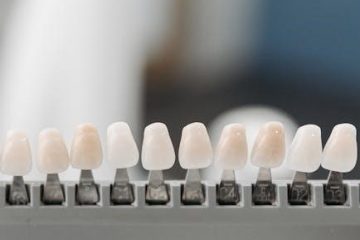
0 Comments